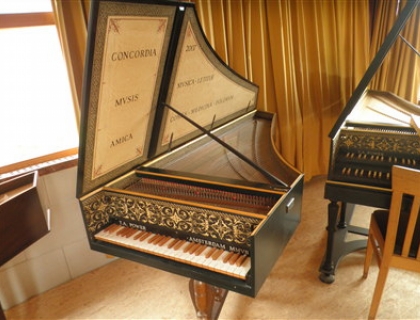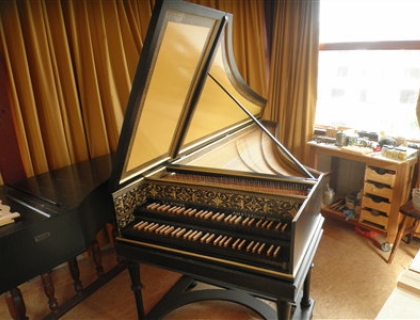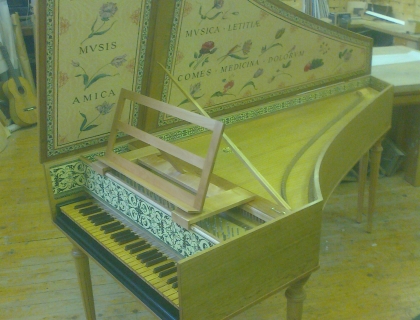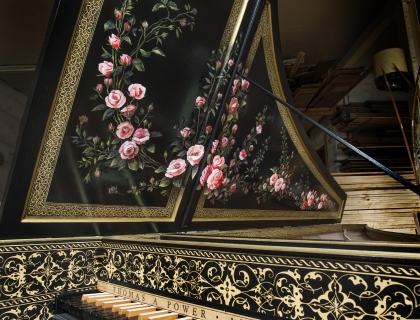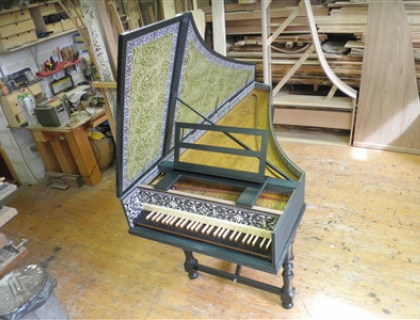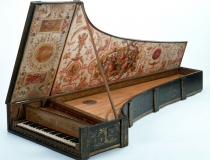Flemish Harpsichords
Single Flemish Copy
Only one of the three harpsichords presented here can be considered a copy and that is the 1679 Ionnes Couchet at the Smithsonian Institute in Washington. The other two instruments are our own ravalaement of the same 1679 Couchet and of the double 1638.
The 1679 is a beautiful and small instrument with a chromatic bass, 4 octave compass and a disposition of 8", 4", 8"on two choirs of strings with the two 8"plucking the same string. Despite it's small size this harpsichord has an incredible clear, round and powerful sound from the first not in the bass to the last in the treble. The lovely keyboard has bone naturals and cherry accidentals and all the measurements such as balance point distance, key length and width have been copied from the original.
Single Flemish ravalement
The new design for this Flemish harpsichord comes from the 1679 Couchet and the bridge and the nut position and shape C2 length and plucking point have been left unaltered. In order to have a high number of keys and not make the instrument too wide we have slightly reduced the spacing between the strings and the width of the single keys, using a more French distance, and modified the length and width of the case. The ravalaement has a compass of GG/AA-e3 with two choirs at 8" and a pitch of A=415-440.
Double Flemish ravalement
We based this instrument on the 1638 Ionnes Ruckers for the design of this double Flemish harpsichord the original instrument is in the Russell collection in Edinburgh and it is the only extant Ruckers with its original transposing keyboards. The two keyboards original a fourth apart have been aligned and the compass enlarged to FF/GG-f3, with the typical 18th Century French disposition, 8", 4", 8" and a coupler mechanism. Also on this instrument the C2 length and bridge and nut position and shape have been preserved.
See also...
|
If you would like an instrument after an Italian builder we will be more than happy to make one for you. We take the instruments of Giusti, Transuntino, Buffo, Grimaldi and Gregori as inspiration for our historically based realisations. |
The 1769 double manual as found in the Russell (University of Edinburgh) collection is one, if not the most copied individual instruments by harpsichord makers all over the world. This could be due to its light and accurate action and rich, distinctive sound. It is also suitable for a wide... |

